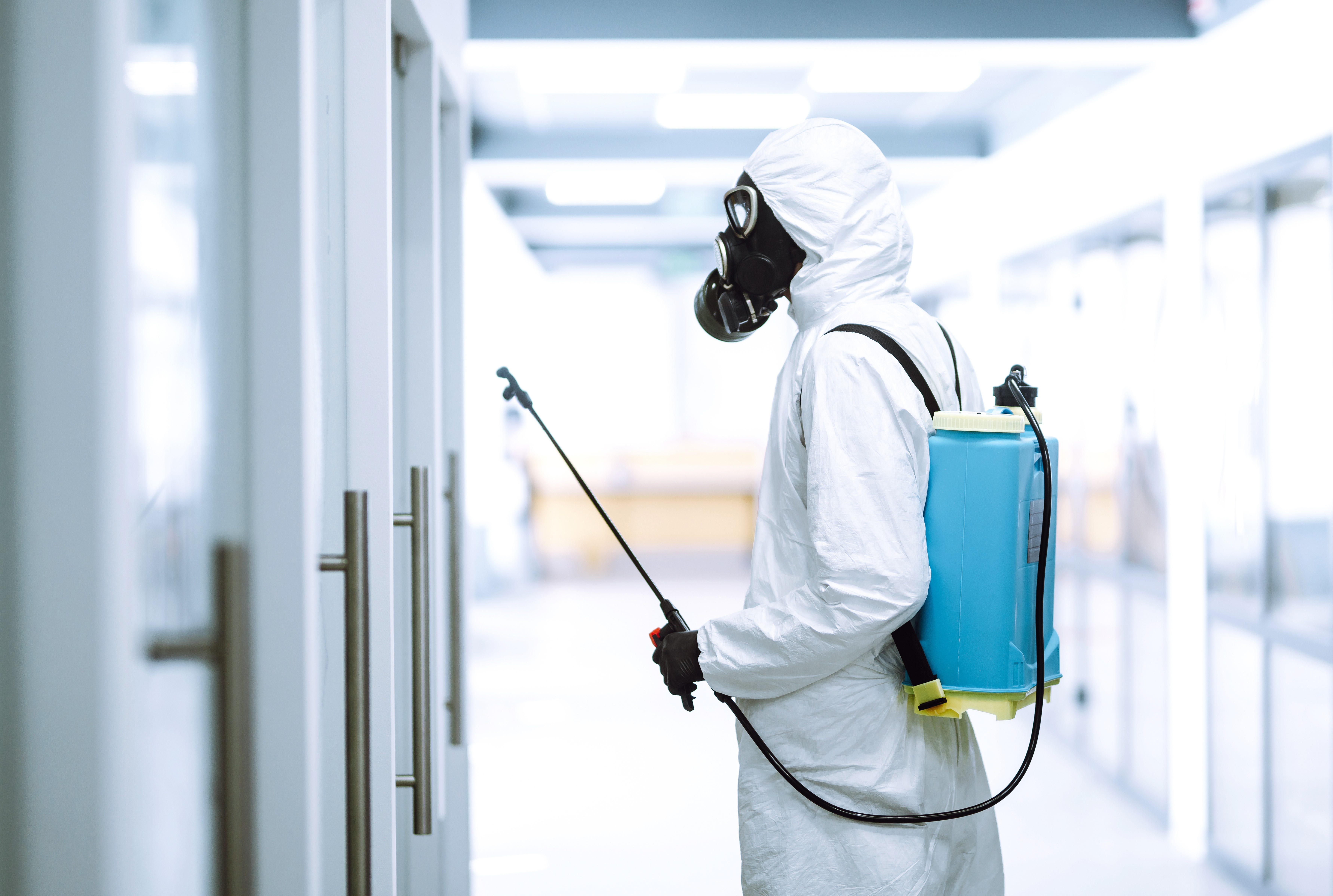Cover Feature
Best practices for using vaporized hydrogen peroxide indoors

Photo courtesy of PK Safety
The COVID-19 pandemic has presented significant challenges to businesses and organizations, who have all had to adjust their practices to reduce the spread of coronavirus and protect workers and customers. Managers had to rethink safety practices and approaches to hazards that they hadn’t needed to consider before. Anyone who spends time in schools, hospitals, office buildings, confined spaces, and places with poor ventilation has also had to think about how long the virus lives, how it spreads, and how to best protect their health and safety as well as the people around them.
To this end, many workplaces are looking for new and improved methods of decontaminating indoor spaces, especially after a possible outbreak. To keep business running more or less, as usual, these methods need to be efficient, cost-effective, and safe enough to use regularly. Using vaporized hydrogen peroxide (VHP) as a disinfection and decontamination measure has become increasingly common, and while it fits the criteria many organizations are looking for, it does require some extra safety precautions. When you consider that VHP can help cut down on infections and illnesses, though, it’s probably worth the extra caution to be able to live and work as close to normal as possible.
VHP process
Many businesses will use VHP processes to disinfect indoor work environments, especially if designed for prolonged human occupancy. It’s a fast and reliable way to decontaminate an indoor area, making it a preferred alternative to other disinfecting processes like wiping everything down with disinfectant wipes or for microorganisms that aren’t effectively killed by other treatment methods. Every surface in the room will be treated with the same chemicals, and it’s a fast way to decontaminate a large space. It’s also a good option for spaces that require regular treatment, although managers need to be careful to check for lingering VHP in the environment.
The VHP process works first by using a generator to dehumidify the area. Next, the machine sends aqueous hydrogen peroxide over a vaporizer to distribute it in the air, circulated based on the user’s desired concentration — anywhere from 140 ppm to 1400 ppm. The vaporized mist will kill bacteria and other contaminants within seconds of exposure. The process concludes with the generator sucking up as much of the VHP as possible and returning the space to its previous but now cleaner condition.
Dangers of hydrogen peroxide
While VHP is a fast and effective process for sterilizing work environments, it can also be potentially harmful to people. It’s crucial to fully remove VHP from the area either by venting it to the outside or recapturing it before allowing employees back onsite. Once enough time has passed, the generator will typically suck up the VHP, where it will convert it back into liquid hydrogen peroxide. This allows the generator to recoup as much H2O2 as possible. However, you can also open the windows to air out your work environment if you don’t need to reuse your VHP. This will usually clear the area of VHP until it is safe for human occupation, typically <1 ppm.
Like with many atmospheric hazards, symptoms and health effects related to VHP exposure become more severe with higher concentrations of hydrogen peroxide. At high concentrations, hydrogen peroxide is corrosive to skin, eyes, and mucus membranes. This means that exposed workers may suffer from respiratory irritation, sore throats, watery eyes, skin irritation, and internal organ damage. Small concentrations result in irritation and pain.
Hydrogen peroxide rapidly decomposes inside of the body, meaning that there’s a low chance of toxicity from chronic exposure. Repeated exposure can still cause chronic irritation of respiratory tissues and could lead to lung collapse. A single small exposure can be recovered from quickly and not cause any delayed or long-term effects, but severe exposures could cause lung damage even if the person doesn’t notice any symptoms for 24 hours.
There’s no antidote to hydrogen peroxide. The effects can be treated, though, and most patients recover. Anyone with serious symptoms may require hospitalization. There are also no tests that determine exposure, although blood tests and chest x-rays might be used during treatment to determine whether the lungs have been injured.
You can find more information about hydrogen peroxide through your regional poison control center, health department, ATSDR, or doctor or clinic that specializes in occupational and environmental health. For work-related exposures, employers, OSHA, and NIOSH will be the best contacts.
Best practices for H2O2
Hydrogen peroxide is odorless, colorless, and nearly impossible to detect without an H2O2 gas monitor. Employers should use these gas detectors to make sure that the workplace is safe for people again, if it’s been treated with VHP. Ideally, one or more should be installed inside of the work area to prevent possible exposure and sound an alarm if it detects a high concentration of VHP, thus allowing employers to take additional steps to clear the air by installing filters, opening windows, or other preferred methods.
There are also wearable, portable H2O2 gas monitors that are on the market, designed for field work or for use when entering confined spaces and very convenient to bring from one location to another. These monitors clip onto the belt or can be handheld, which makes keeping it around while working easier. Like with permanent installations, wearable gas detectors will issue a warning when there’s too much VHP in the air, which can allow workers to evacuate or put on respirators.
Businesses need to keep records of safety information, no matter what industry they work in. Any illnesses or injuries, as well as what was done to prevent them, will need to be recorded. Having this information around for future reference is a good idea for legal reasons as well as educational ones.
Before committing to VHP decontamination, a Standard Operating Procedure (SOP) or method statement should be developed or reviewed. This will cover how and when the process is used and whether it will be performed by an on-staff crew or by an external contractor. The required PPE, RPE, and emergency action procedures should be codified in writing as well. Note where standard or terminal cleaning needs to be done, the validation processes, the training programs that are used, how VHP might interact with your fire alarm system, and the capability of your HVAC system to seal and shut off.
Although there may be risks to using VHP processes to decontaminate your workspace, there are also many risks to not thoroughly cleaning the area and doing everything you can to protect workers, customers, and other people from the spread of pathogens and other harmful contaminants. VHP is an effective decontamination method that will benefit many businesses and organizations. And when you consider that clearing the air with proper ventilation and monitoring conditions with an H2O2 monitor is all that you really need to do, the risks are very worth the reward of increased safety and peace of mind.
Looking for a reprint of this article?
From high-res PDFs to custom plaques, order your copy today!






